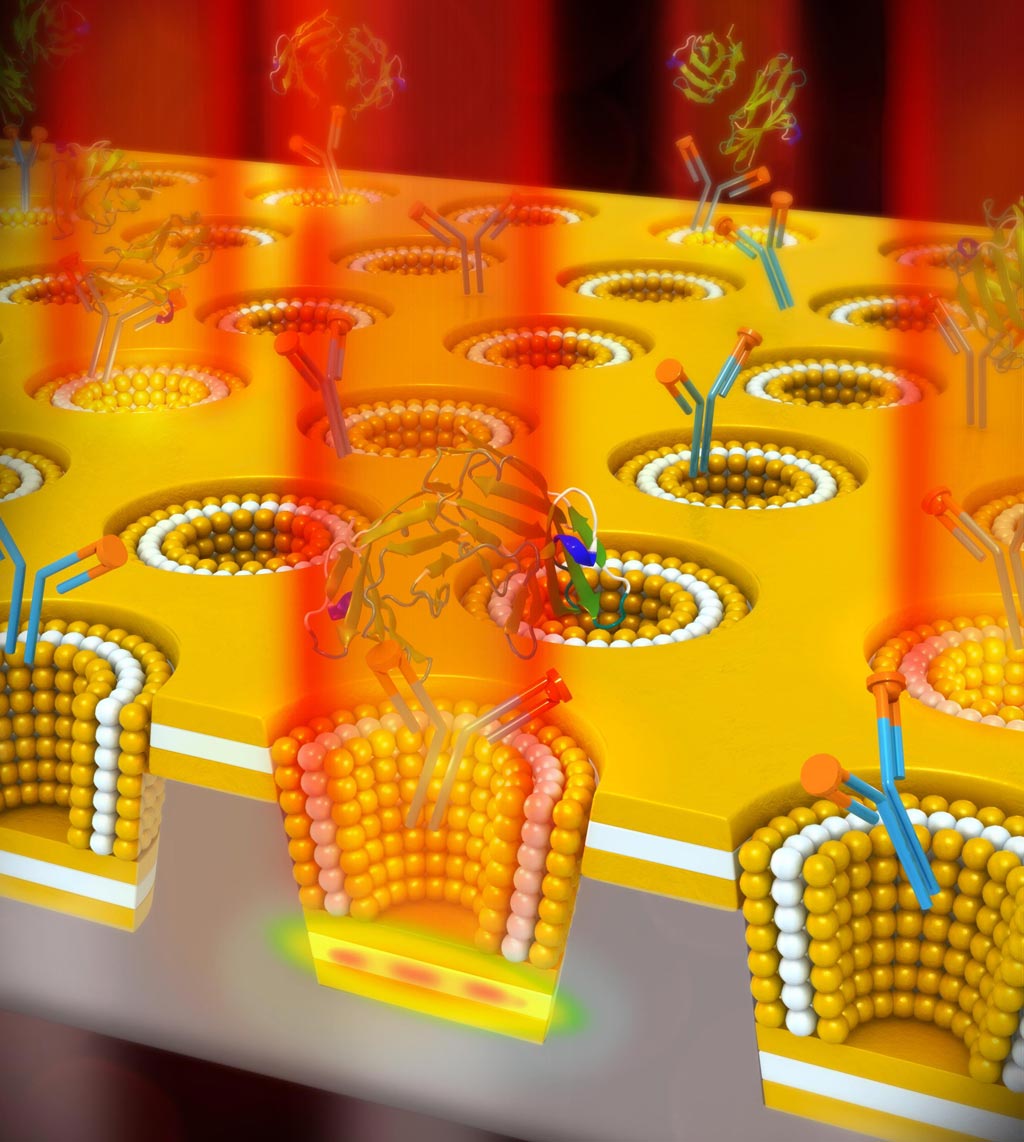Sensor Technology May Improve Cancer Diagnosis
By LabMedica International staff writers
Posted on 19 Jun 2017
Researchers have developed a plasmonic sensor that could provide reliable early detection of biomarkers for many forms of cancer and eventually for other diseases. The sensor detected cancer biomarker carcinoembryonic antigen (CEA) to the magnitude of only 1 nanogram/milliliter.Posted on 19 Jun 2017
The research team, from University of Illinois at Urbana–Champaign (Urbana–Champaign, IL, USA), was led by Logan Liu and Lynford Goddard, associate professors of electrical and computer engineering, with students Abid Ameen and Lisa Hackett carrying out the project.

Image: The new device combines two sensing methods, which had not until this time been able to be used together. It uses a 3D multi-layer nanocavity in a nanocup array, and it uses plasmonic sensing (Photo courtesy of University of Illinois).
Most humans carry CEA with an average range of 3-5 nanograms/milliliter. The researchers chose to focus on CEA because its presence in higher concentrations is an early indicator of many forms of cancer, including lung and prostate cancers.
The plasmonic sensor is an improvement of the current method. First, it improved the limit of detection by at least 2 orders of magnitude. Secondly, it works with much less instrumentation so it is less expensive and more portable, and doesn’t require nearly the expertise. Also, only a small amount of blood sample is required, such as from a simple finger prick.
“By combining plasmonic properties and the optical cavity properties together in one device we are able to detect lower concentration of biomarker by light confinement and transmission in the cavity layer and from the top of the device, respectively, based on the thickness of the multilayers and the refractive index of the cavity layer,” Ameen explained.
“The nanocup array provides extraordinary optical transmission,” Hackett added, “If you take a thin metal film and try to shine light through it, there will be almost no light transmitted. However if you put a periodic array of nanoholes, or in our case a nanocup structure, then what you see is a resonance condition where at a certain wavelength, you will have a peak in the transmission through this device.”
“Usually when you have these types of refractometric plasmonic sensors, you have a shift in the angle or a change in your wavelength when the resonance condition is met,” said Hackett, “In our case, because we have incorporated a nanocavity, we have a fixed resonance wavelength.” As the concentration of biomolecules (in this case CEA) increases, so does the refractive index, which produces an increase of the transmission intensity at a fixed wavelength that can be easily detected.
Eventually “we can take this sensor, which we’ve optimized and incorporated with an LED and have the most compact instrumentation, in fact no sophisticated instrumentation at all,” Ameen said.
Currently, detection methods for cancer biomarkers are implemented in high-risk patients, especially cancer patients in remission. Because of the portability and inexpensive nature of this method, it can be more easily administered to any patient at routine check-ups.
“Right now cancer is detected closer to end-stage,” Ameen noted, “We want to detect it as early as possible.” This could allow patients to be treated even before cancer cells metastasize. Down the road, the method could be used for detection of other diseases. And if “made very cost-effective and portable,” said Hackett, “it would be great to see people be able to take more control over their health and monitor something like this on their own.”
The study, by Ameen A et al, was first published March 29, 2017, in the journal Advanced Optical Materials.
Related Links:
University of Illinois at Urbana–Champaign













